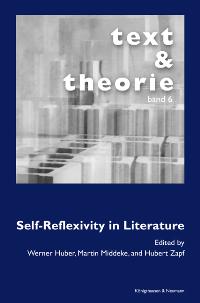Beschreibung
Introduction – C. Henke: Self-Reflexivity and Common Sense in A Tale of a Tub and Tristram Shandy: Eighteenth-Century Satire and the Novel – C. Goer: Wie Tyrann Amor seine Meisterin fand: Die Geburt des Individuums aus dem Geist der Musik in Wilhelm Heinses Musikroman Hildegard von Hohenthal – H. Breuer: John Keats’ Ode To Autumn als Metapoesie – H. Zapf: Structure, Chaos, and Self-Reference in Edgar Allan Poe – U. Böker: “A raid on the inarticulate:” Hawthorne, Hopkins, Hofmannsthal – T. Fischer-Seidel: Archetypal Structures and Literature in Joyce’s Ulysses: Aristotle, Frye, and the Plot of Ulysses – P. Freese: Trouble in the House of Fiction: Bernard Malamud’s The Tenants – B. Hesse: “The moo’s an arrant thief” – Self-Reflexivity in Nabokov’s Pale Fire – W. Huber: “Why this farce, day after day?” On Samuel Beckett’s Eleuthéria – L. Volkmann: Explorationen des Ichs: Hanif Kureishis post-ethnische Kurzgeschichten – P. Lenz: Talking-Cures oder Tall Stories? The (Dis)Establishing of Reality in Conor McPherson’s The Weir – A. Merbitz: The Art of Listing: Selbstreflexive Elemente in Nick Hornbys High Fidelty – A.Nünning: Fictional Metabiographies and Metaautobiographies: Towards a Definition, Typology and Analysis of Self-Reflexive Hybrid Metagenres – M. Middeke: Self-Reflexivity, Trans-/ Intertextuality, and Hermeneutic Deep-Structure in Contemporary British Fiction – A. H. Kümmel: Mighty Matryoshka: Zum Konzept der fraktalen Person – M. Markus: Tu put it shortly: Abkürzungen, reflektiert am Beispiel englischer und deutscher Eigennamen – R. Weskamp: Selbstreflexion und Fremdsprachenerwerb. Die Herausgeber Lehren an der Universität Augsburg die Fächer Anglistik/Amerikanistik.

